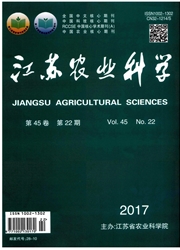

 中文摘要:
中文摘要:
cambial 物候学和 intra 年度的生长动力学的高分辨率的观察是为理解树生长的反应到气候和环境变化的有用途径。在过去的二十年期间,快速的社会经济的开发在西北的中国在 Heihe 河的中间的活动范围的绿洲为水资源增加了需求,并且 Heihe 河的更低的活动范围从一条长期的河改变了到一条短暂溪流与一减少并且降级河边的地区。树柳属植物(Tamarix ramosissima ) 是荒芜的河边的森林的主导的灌木种类。在这研究,日报和树柳属植物茎直径生长的季节的模式,包括树戒指形成的主要时期,被检验。与为 dendrohydrological 区域的生态学和在类似的干旱区域的荒芜的河边的森林的管理的含意一起,有关生长变化的驱动力的观察也被介绍。茎直径的日报季节的活动和生长戒指形成的动力学被学习在 Ejin 旗帜在 Heihe 河的更低的活动范围在一个荒芜的河边的森林看台在灌木树柳属植物在 2012 成长季节期间使用一个点测树器和微英国管的方法,西北的中国的内部蒙古。通常,变化在日报树柳属植物的直径被一个不稳定的多山峰模式描绘,与在成长季节的累积的茎直径生长跟随一条塑造 S 的曲线。到早 8 月的从迟了的 5 月的时期是茎直径生长和生长戒指形成的主要时期。在 hydroclimatic,在这考虑的因素学习的所有之中,仅仅地下水深度显著地在这个时期期间与茎直径增长被相关。为 dendrochronological 学习,因此,树柳属植物的年度戒指能被用来重建处理那决定地区性的水政体,例如在地下水深度的河流量和变化。为荒芜的河边的森林的管理,合适的地下水深度必须在春天和夏天被维持支撑树健康和合适的看台结构。
 英文摘要:
英文摘要:
High-resolution observations of cambial phenology and intra-annual growth dynamics are useful approaches for understanding the response of tree growth to climate and environmental change. During the past two decades, rapid socioeconomic development has increased the demand for water resources in the oases of the middle reaches of the Heihe River in northwestern China, and the lower reaches of the Heihe River have changed from a perennial river to an ephemeral stream with a decreased and degraded riparian zone. Tamarisk(Tamarix ramosissima) is the dominant shrub species of the desert riparian forest. In this study, the daily and seasonal patterns of tamarisk stem diameter growth, including the main period of tree ring formation, were examined. Observations concerning the driving forces of growth changes, along with implications for the ecology of the dendrohydrological area and management of desert riparian forests in similar arid regions, are also presented. The diurnal-seasonal activity of stem diameter and the dynamics of growth ring formation were studied using a point dendrometer and micro-coring methods during the 2012 growing season in shrub tamarisk in a desert riparian forest stand in the lower reaches of the Heihe River in Ejin Banner, Inner Mongolia of northwestern China. Generally, the variation in diurnal diameter of tamarisk was characterized by an unstable multi-peak pattern, with the cumulative stem diameter growth over the growing season following an S-shaped curve. The period from late May to early August was the main period of stem diameter growth and growth-ring formation. Among all of the hydroclimatic factors considered in this study, only groundwater depth was significantly correlated with stem diameter increment during this period. Therefore, for the dendrochronological study, the annual rings of the tamarisk can be used to reconstruct processes that determine the regional water regime, such as river runoff and fluctuations in groundwater depth. For the management of desert riparian for
 同期刊论文项目
同期刊论文项目
 同项目期刊论文
同项目期刊论文
 Preliminary dendrochronological studies on Populus euphratica in the lower reaches of the Heihe Rive
Preliminary dendrochronological studies on Populus euphratica in the lower reaches of the Heihe Rive Hydroclimate-driven changes in the landscape structure of the terminal lakes and wetlands of the Chi
Hydroclimate-driven changes in the landscape structure of the terminal lakes and wetlands of the Chi Daily and seasonal stem radial activity of Populus euphratica and its association with hydroclimatic
Daily and seasonal stem radial activity of Populus euphratica and its association with hydroclimatic 期刊信息
期刊信息
